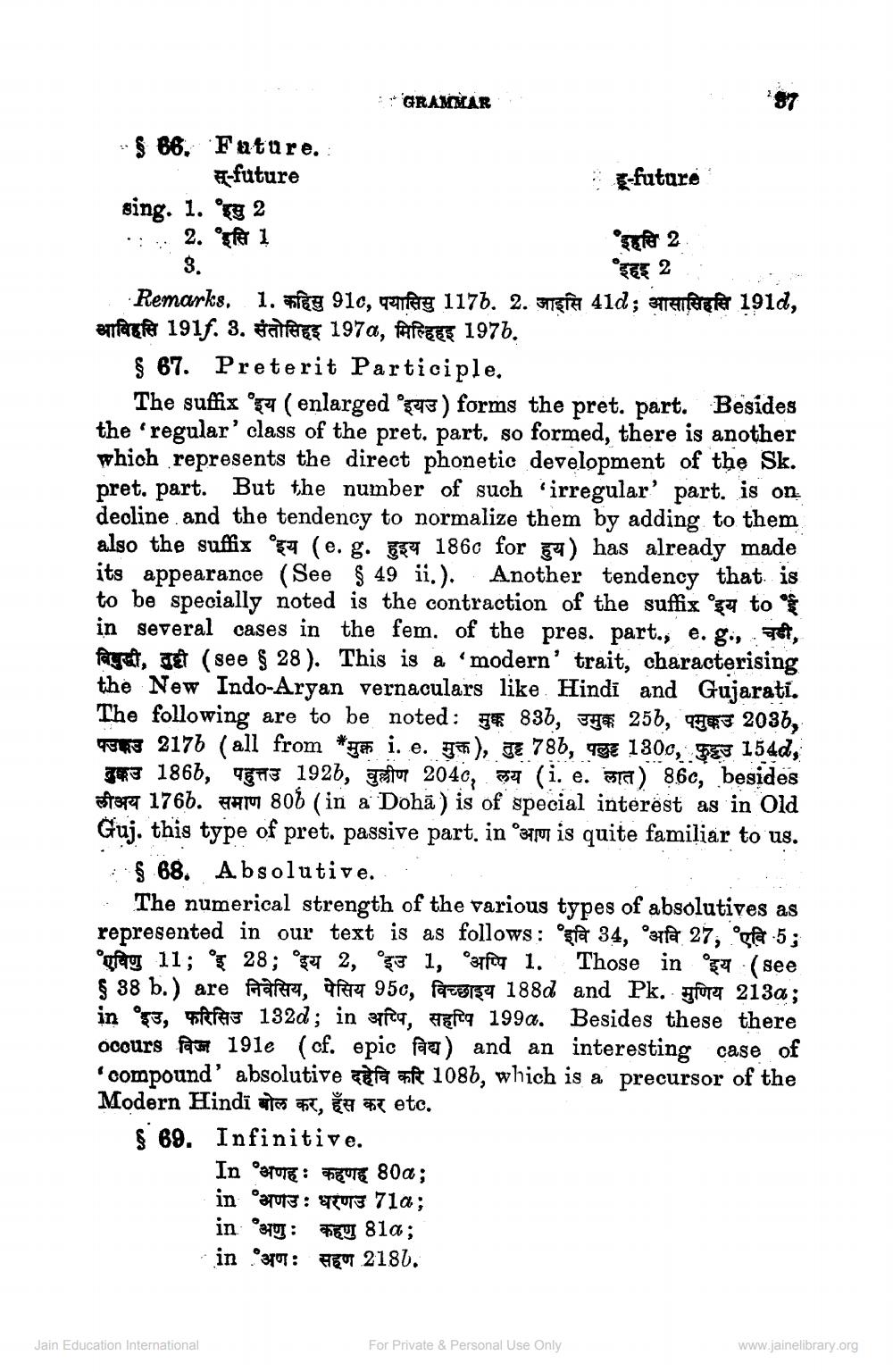________________
: GRAMMAR
- $ 66. Fature. -future
-future sing. 1. 'ng 2 .: 2. oste 1
po 2 3.
Tak 2 Remarks. 1. meg 91c, 4aeg 1176. 2. osa 41d; Senereller 1910, enlargler 191f. 3. fees 1970, APEK 1976.
$ 67. Preterit Participle.
The suffix it (enlarged 43 ) forms the pret. part. Besides the 'regular' class of the pret. part. so formed, there is another which represents the direct phonetic development of the Sk. pret. part. But the number of such irregular' part. is on decline and the tendency to normalize them by adding to them also the suffix (e. g. 654 186c for gy) has already made its appearance (See $ 49 ii.). Another tendency that is to be specially noted is the contraction of the suffix it to in several cases in the fem. of the pres. part., e. g., 947, facere, cet (see § 28). This is a modern' trait, characterising the New Indo-Aryan vernaculars like. Hindi and Gujarati. The following are to be noted: # 83b, Jy* 256, 99#2036, FR3 2176 (all from *Het i. e. m), JE 786, TgE 130c, ev 154d,
33 1866, 673 1926, glu 2040, (i, e. a) 86c, besides etapa 1766. AM 806 (in a Dohā) is of special interest as in Old Guj. this type of pret. passive part in Ram is quite familiar to us.
$ 68. Absolutive..
The numerical strength of the various types of absolutives as represented in our text is as follows: esta 34, 3ê 27, glat 5; ogtag 11; ° 28; 2, '3 1, apfen 1. Those in '52 (see § 38 b.) are Aartre, ofte 950, fazenge 188d and Pk. gfuta 2130; in 's, was 132d; in pfa, i 1990. Besides these there ocours pas 191e (cf. epic faa) and an interesting case of
compound' absolutive refa oft 1086, which is a precursor of the Modern Hindi atas #, $* etc. $ 69. Infinitive.
In sture: FETE 80a; in Tuts : curs 710; in 3: FEU 81a; in 37: FEU 2186.
Jain Education International
For Private & Personal Use Only
www.jainelibrary.org




